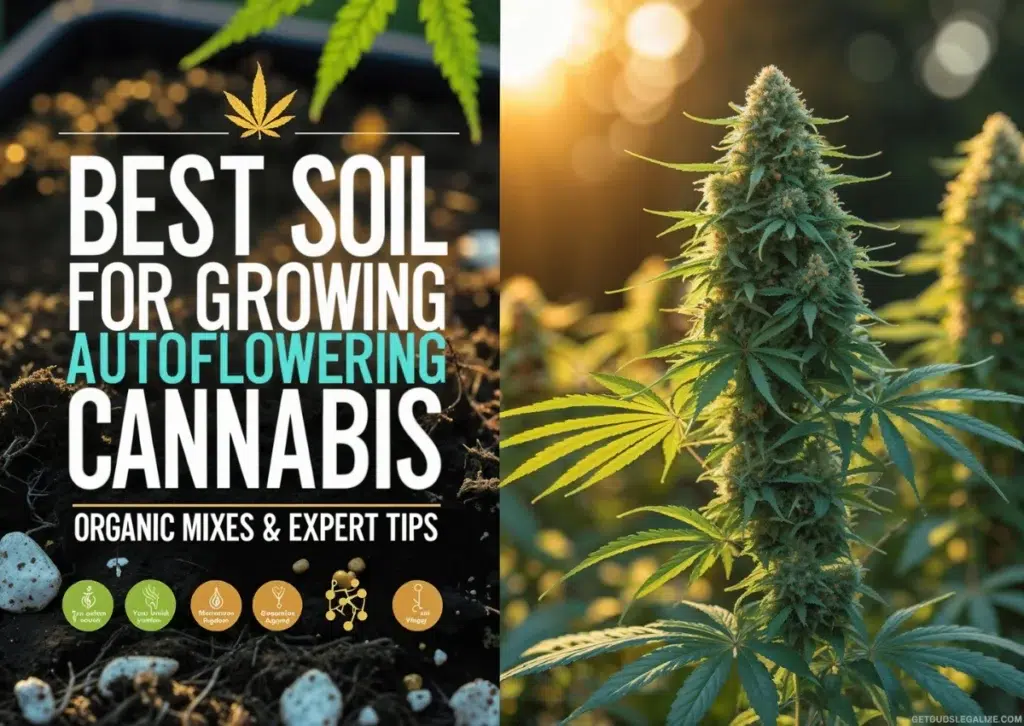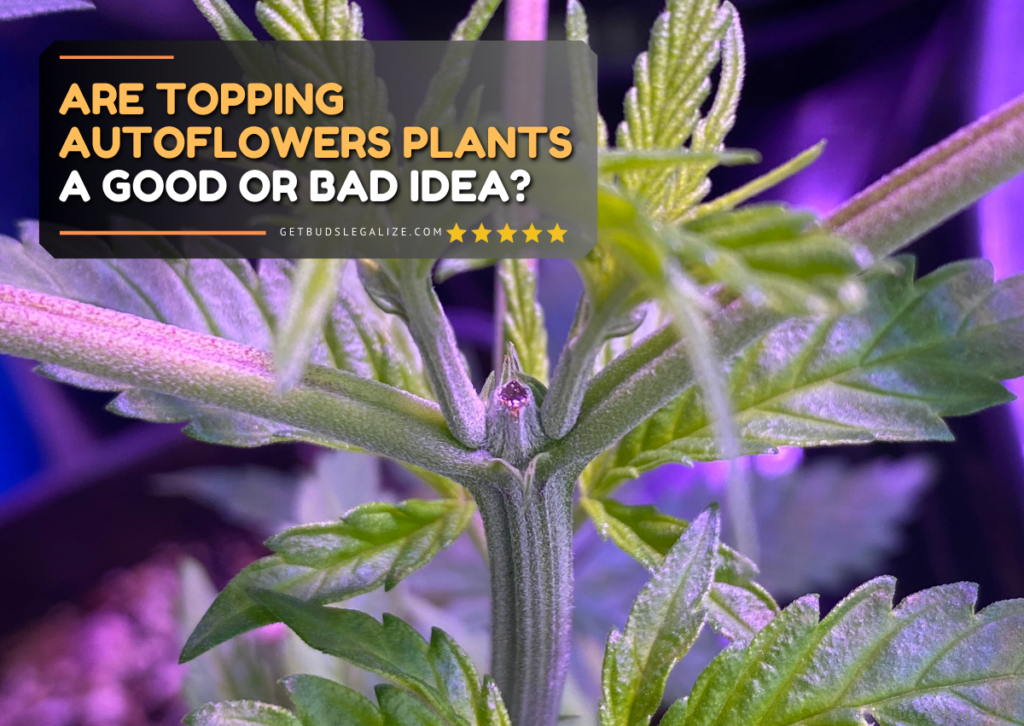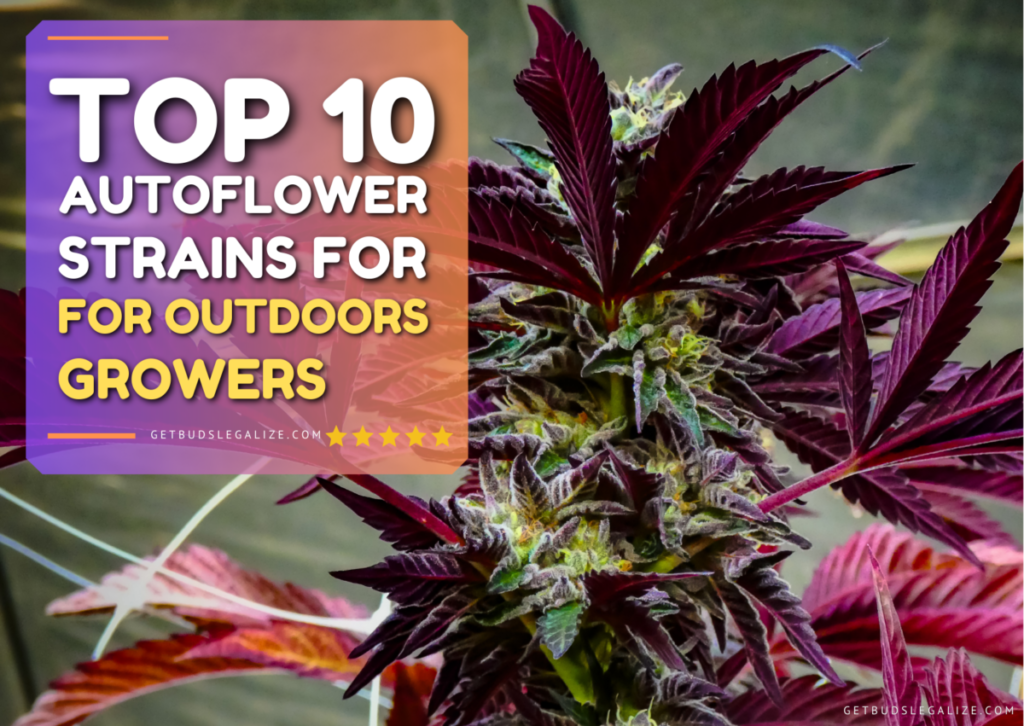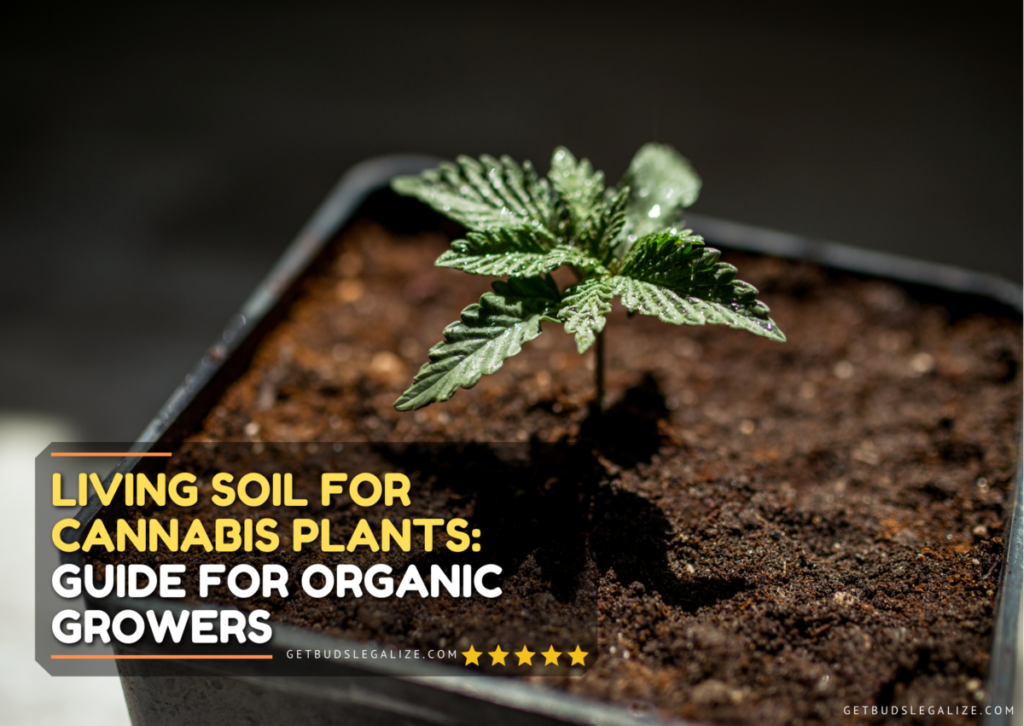Best Soil for Growing Autoflowering Cannabis: Organic Mixes, Super Soil Recipes & Pro Growing Tips
Autoflowering cannabis has transformed how growers approach home cultivation. These unique plants, thanks to their genetics derived from Cannabis ruderalis, don’t rely on changing light cycles to begin flowering. Instead, they shift into bloom automatically after just a few weeks of growth.
This automatic transition is a huge advantage for growers seeking quick, compact, and low-maintenance harvests, but it also means there’s little room for error, especially when it comes to the soil they’re growing in.
Why the Right Soil Is Crucial for Autoflowering Cannabis
Soil is far more than a growing medium; it’s a living, breathing ecosystem that forms the foundation for your plant’s overall health, growth rate, and yield potential.
Autoflowers develop rapidly—often from seed to harvest in just 8–10 weeks—so choosing the right soil from the start is absolutely vital. There’s little time for recovery if problems arise, making soil quality a key factor in your grow’s success.
Poor soil composition can result in nutrient lockout, weak root development, and underwhelming harvests—all of which are difficult to correct once the plant enters its fast-paced flowering stage.
This article will walk you through the specific soil requirements of autoflowering cannabis. You’ll discover the foundations of healthy soil, how to customize your mix for autoflowers, and strategies to avoid common pitfalls.
- Why soil selection plays an even bigger role in autoflower performance than it does for traditional photoperiod strains
- Which growing media works best
- What organic amendments to include
- How to build a proven super soil recipe
- And how to maintain optimal soil conditions throughout the grow
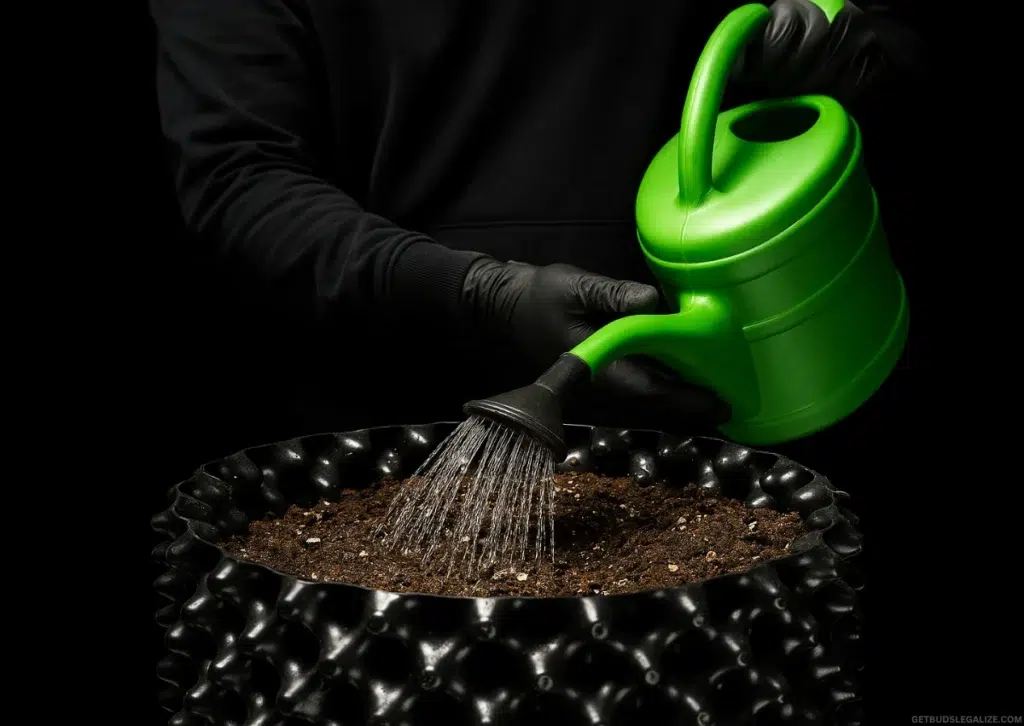
Why Soil Quality Is Critical for Autoflowering Cannabis Plants
Autoflowering strains have a unique genetic lineage that traces back to Cannabis ruderalis, a subspecies native to regions with harsh climates and poor soil. As a result, autoflowers are naturally compact, resilient, and fast-maturing.
These traits make them ideal for growers who want quick turnarounds, limited space, and lower maintenance. However, their rapid growth means they’re particularly sensitive to any environmental missteps.
Why You Can’t Afford Soil Mistakes:
- Short Lifecycle: Autoflowers go from seed to harvest in as little as 8 weeks. If you make a mistake—like overfeeding or choosing a poor soil blend—there may not be enough time for the plant to recover.
- Compact Root Systems: Smaller root networks mean the plant relies heavily on soil that promotes rapid root development and effective nutrient uptake.
- Nutrient Sensitivity: Autoflowers don’t tolerate excessive nutrients, especially synthetic, salt-based ones. Overfeeding can cause nutrient burn, stunted growth, and reduced yields.
In short, autoflowers thrive in light, well-aerated, microbially rich, and organically balanced soils. Getting your medium right from the beginning ensures strong vegetative growth and vigorous flowering.
Related Article:

Soil vs. Coco Coir: What’s the Better Medium for Autoflowers?
When selecting your growing medium, the two most common choices for autoflower growers are organic soil and coco coir. Each comes with its own advantages and considerations.
🥥 Coco Coir
Coco coir is a growing medium made from the fibrous husks of coconuts, prized for its excellent water retention, aeration, and root-zone oxygenation. Because it’s inert, coco contains no nutrients, which means you have to provide everything your plants need through careful feeding.
While this might sound like a lot of work, coco coir gives experienced growers full control over the nutrient regimen, allowing for very fast growth. However, this level of control leaves little margin for error—any misstep in feeding or pH can lead to a rapid decline in plant health.
Coco doesn’t support microbial life on its own, so many growers combine it with soil or compost to give their plants access to a living environment.
🌾 Organic Soil
Unlike coco, organic soil offers a more balanced, self-sustaining environment that requires less day-to-day management. High-quality organic soils provide adequate drainage, buffer against pH swings, and support a thriving ecosystem of beneficial microbes.
These microbes help convert organic materials into nutrients your plants can actually absorb, while also helping defend against harmful pathogens.
However, not all soils are created equal. Low-cost bagged soils may compact over time, restrict root development, or contain poorly balanced nutrient ratios. For best results, choose a light, fluffy soil blend enhanced with ingredients like compost, worm castings, and perlite for aeration and nutrient availability.
🧪 Best of Both Worlds: A Coco-Soil Blend
Many seasoned growers find success with a mix of both worlds—blending about 20–30% coco coir into a high-quality organic soil.
This improves drainage and oxygen flow to the roots without sacrificing the natural microbial richness that comes with organic soil.
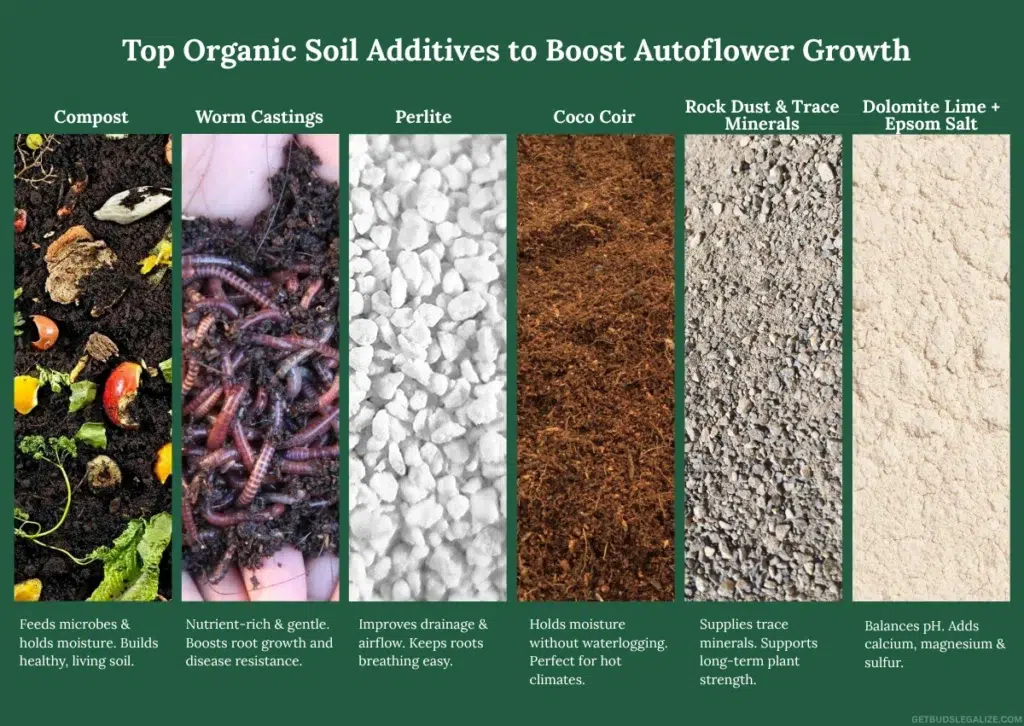
Top Organic Soil Additives to Boost Autoflower Growth
Once your base medium is in place, you can elevate its effectiveness with targeted organic amendments. These natural enhancements do more than just feed your plants—they improve nutrient absorption, strengthen root systems, and foster a dynamic soil microbiome that supports healthy growth from seed to harvest.
♻️ Compost: The Microbial Powerhouse
Compost is the cornerstone of living soil, delivering a rich blend of slow-release nutrients and microbial life. It breaks down organic matter into forms your plants can absorb while improving moisture retention, aeration, and overall soil structure. Quality matters—make sure your compost is well-aged and fully decomposed to avoid introducing pathogens or nutrient imbalances.
🪱 Worm Castings: Nature’s Best Fertilizer
Worm castings are packed with plant-ready nutrients and beneficial microbes, making them a top-tier amendment for autoflowers. They help suppress disease, stimulate root growth, and enhance nutrient uptake—without the risk of burning your plants. Add a few handfuls to your mix or use as a gentle top-dressing throughout the grow cycle.
🪨 Perlite: Improve Drainage and Root Oxygen
This lightweight volcanic glass keeps soil light and porous, improving both drainage and oxygen access to the root zone. For container-grown autoflowers, this is essential, reducing the risk of overwatering while encouraging rapid root expansion.
🥥 Coco Coir: Boost Moisture Retention
Coco coir boosts water retention without compromising aeration, creating a well-balanced root environment. When added to soil, it helps maintain consistent moisture levels, making it easier for roots to access both water and oxygen, especially useful in hot or dry grow setups.
🧂 Rock Dust & Trace Minerals: Long-Term Plant Health
Trace minerals like those found in basalt or azomite are vital for metabolic functions and plant resilience. Think of them as the “micronutrient insurance” in your mix—supporting everything from enzyme production to stress tolerance. A light dusting goes a long way toward long-term soil health.
⛰️ Dolomite Lime & Epsom Salt: pH and Magnesium Management
Dolomite lime stabilizes soil pH while supplying calcium and magnesium, which are crucial for plant structure and nutrient transport. Meanwhile, Epsom salt provides magnesium and sulfur, both of which are critical for chlorophyll production and flower development. Used in moderation, these two inputs keep your soil balanced and your plants thriving.
Related Article:
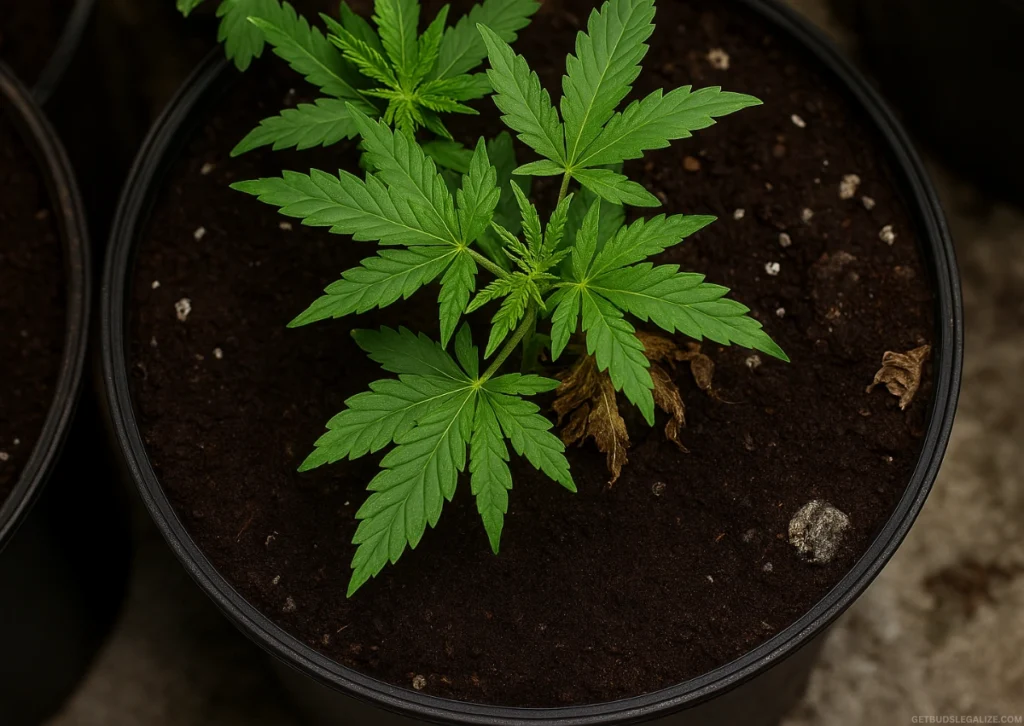
DIY Autoflower Soil Mix Recipe 24L Batch (Step-by-Step Guide)
This organic super soil mix is designed to power your autoflowers from seed to harvest with minimal intervention. It contains everything your plant needs to thrive, while remaining gentle enough to avoid nutrient burn.
Ingredients:
- 4 kg organic potting soil: nutrient-rich base with a balanced texture
- 1 kg of worm castings: boosts fertility and microbial activity
- 500 g perlite: promotes airflow around the roots and improves drainage to prevent waterlogging
- 200 g blood meal: quick-release nitrogen for vegetative growth
- 200 g bone meal: phosphorus and calcium for root and flower development
- 150 g bat guano: potassium and phosphorus for flowering
- 100 g of rock phosphate: supports flower and fruit development
- 50 g dolomite lime: balances pH and adds calcium/magnesium
- 40 g Epsom salt: provides magnesium and sulfur
- 50 g azomite: adds a wide spectrum of over 70 trace minerals that support enzymatic functions and plant vitality
- 10 g humic acid: Improves soil texture and enhances nutrient uptake by increasing cation exchange capacity
Step-by-Step Mixing Instructions:
- Mix all ingredients thoroughly in a large container.
- Moisten the mixture with water until evenly damp, not soggy.
- Let the mixture sit (or “cook”) for 2–4 weeks. This allows microbes to break down nutrients and balance the mix.
- When ready, fill your pots directly or layer this as the bottom half beneath a lighter seed-starting mix.
Pro Tips: For even more microbial activity, you can add a touch of neem cake (for pest control), biochar (for carbon retention), or aloe vera powder (for root development).
Related Article:
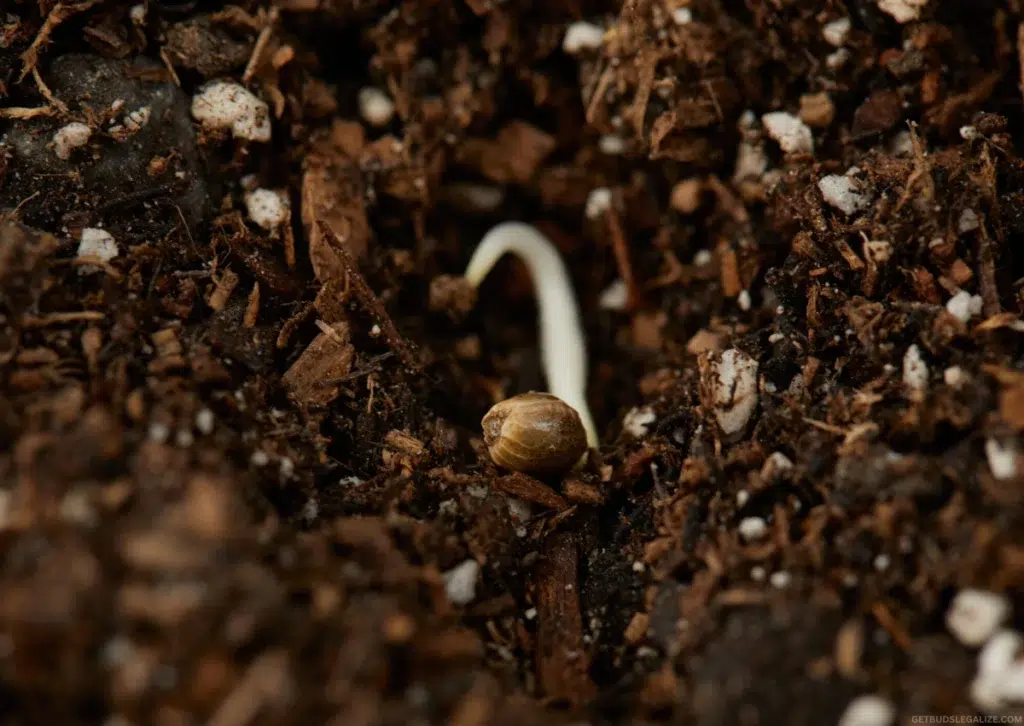
How to Maintain and Optimize Soil for Autoflowering Plants During the Grow Cycle
Even with the perfect soil mix, proper soil management is key to ensuring a successful autoflower grow. Here are the critical practices every grower should follow:
1. Monitor Soil pH for Nutrient Uptake:
The ideal soil pH for cannabis is 6.0–6.5. Outside of this range, your plants may suffer from nutrient lockout, where essential nutrients are present but unavailable to the roots.
- Test regularly using a soil slurry or the runoff water from your pots.
- Use dolomite lime to maintain stable pH levels in organic mixes.
- Avoid pH swings caused by overfeeding or inconsistent water sources.
2. Watering Techniques to Avoid Root Issues:
Watering mistakes—especially overwatering—are among the most common causes of poor growth and root problems in autoflowers. Since these plants grow fast and don’t like stress, dialing in your watering routine is crucial.
- Only water when the top inch of soil feels dry—this helps prevent soggy conditions that can suffocate roots.
- Always use pots with excellent drainage to avoid water buildup and reduce the risk of root rot.
- During the seedling and early vegetative stage, consider bottom watering to encourage deeper root growth and stronger plants.
🌱 Tip: Lift your pots before watering—if they feel light, it’s time to water; if still heavy, hold off another day.
3. Organic Feeding Tips When Deficiencies Appear:
If you’re using a quality super soil, your autoflowers may not need much extra feeding at all. But if signs of deficiency appear, go organic and gentle:
- Use compost teas to increase microbial activity and supply gentle nutrients.
- Apply kelp or seaweed extract to support plant stress tolerance.
- Add a splash of unsulfured molasses to feed the microbial life that feeds your plants.
4. Support Microbial Life for Long-Term Soil Health:
A living soil thrives on microbial diversity—don’t let it die off from neglect or chemical exposure.
- At transplant, apply mycorrhizal fungi directly to the root zone to support rapid establishment.
- Use microbial inoculants like Recharge or Mammoth P throughout the grow to keep populations high.
- Avoid synthetic salts, pesticides, or fungicides that harm beneficial organisms.
Related Article:
Final Thoughts: The Best Soil for Growing Autoflower Starts with You
Growing great autoflowers begins long before your seeds sprout—it starts with the soil. A thoughtfully prepared, organically rich, and well-balanced medium gives your plants the strong foundation they need to thrive through every stage of their rapid life cycle.
Choosing the best soil for growing autoflower cannabis isn’t just about nutrients—it’s about creating a living ecosystem that supports root health, nutrient uptake, and stress-free growth. Combine that with proper pH management, mindful watering, and microbial support, and you’ve set the stage for strong, resilient plants and satisfying harvests.
If you’re going to invest in any part of your setup, make it the soil. It’s the one input that touches every part of your plant’s life—and the payoff is well worth it.
🌱 Have a soil mix or organic tip that’s worked wonders with your autos? We’d love to hear it! Join the conversation on our socials and share your go-to strategies with the community.
And don’t forget to subscribe to our grower’s newsletter for in-depth guides, organic grow tips, and DIY amendments—delivered straight to your inbox.
Frequently Asked Questions (FAQs) about Autoflower Cannabis Soil Mixes
Autoflowers grow best in pots ranging from 2.5 to 5 gallons (approximately 10 to 20 liters ). This allows enough room for healthy root development while keeping the plant’s short lifecycle in mind. Outdoors, combine smart pots with the best soil for autoflowers outdoor—light, airy, and rich in organic matter.
Both approaches work—your choice depends on experience, convenience, and desired control over your grow.
For beginners, using a pre-mixed soil for growing autoflowers is highly recommended. Quality organic blends offer:
- Excellent drainage and aeration
- Balanced nutrition for the full grow cycle
- Active microbial life that supports root health and nutrient uptake
This type of autoflower cannabis soil is simple, reliable, and ideal for those starting out.
Experienced growers often prefer to mix their own soil for autoflowers, allowing full customization of nutrient content, texture, and microbial balance. Building your own medium for autoflower cultivation gives more control over how your plants perform—especially if you’re aiming to boost yield, aroma, and resin production.
It’s not a good idea to plant autoflower seeds directly into nutrient-rich super soil. This type of autoflower cannabis soil contains high concentrations of amendments that can burn young seedlings and stunt early growth.
Instead, use a layered soil method for autoflowers:
- Bottom layer: Fill the bottom of your pot with well-prepared super soil for autoflowering cannabis—rich in compost, worm castings, and dry amendments.
- Top layer: Add 2–3 inches of a light, airy seedling mix or organic potting soil for autoflowers. This creates a gentle environment for germination while allowing roots to gradually reach the richer layer below.
This method ensures a smoother transition for young plants and avoids nutrient overload—especially important for autoflowers, which have a short lifecycle and little time to recover from early stress.
🌱 Pro Tip: The best soil for growing autoflowering cannabis balances gentle support for seedlings with long-term nutrition as the plant matures.
To protect the living ecosystem in your autoflower soil, use only clean, microbe-friendly water. Chlorine and chloramine—commonly found in tap water—can harm the beneficial bacteria and fungi that power nutrient cycling in the organic soil.
Here’s how to keep your soil for growing autoflowering cannabis healthy:
- Let tap water sit for 24–48 hours to evaporate chlorine.
- Neutralize chloramine (which doesn’t evaporate) by adding a small amount of vitamin C (ascorbic acid).
- Use rainwater if it’s clean—it’s naturally balanced and rich in trace minerals.
- Filtered or RO water is another excellent option, especially in areas with heavily treated municipal water.
💧 Pro Tip: A thriving microbial network in your soil for autoflower plants means fewer bottled nutrients, better flavor, and more resilient growth. Water quality directly impacts the life in your soil—treat it like part of your feeding program.
Usually not. In a healthy, balanced living soil for autoflowers, nutrients are released naturally by microbes. Since there’s no salt buildup from synthetic fertilizers, flushing isn’t necessary unless you’ve over-applied certain amendments.
In living soil systems, minimal amendments are needed. If you’re using a basic organic mix, top-dress every 3–4 weeks with compost, worm castings, or dry amendments like kelp meal or bat guano to maintain nutrient availability.
Yes, but sparingly. If deficiencies appear, supplement with gentle liquid organics like compost tea, molasses, kelp extract, or fish hydrolysate. These feed both your plant and the microbial life in your autoflower cannabis soil mix.
The ideal soil pH for autoflowers ranges from 6.0 to 6.5. Staying within this slightly acidic range allows your plants to absorb nutrients efficiently—even in well-amended autoflower cannabis soil.
Overwatering is a common mistake when growing autoflowers, especially in dense or poorly draining soil. Since autoflower cannabis has a fast-growing life cycle, strong and healthy roots are essential right from the start to avoid stunted growth.
To prevent overwatering:
- Use a fluffy, well-aerated mix soil for autoflowers. Add ingredients like coco coir, perlite, or pumice to improve drainage.
- Check moisture by touch—don’t water until the top 1–2 inches of soil feel dry.
- Choose containers with excellent drainage. Fabric or air pots help excess water escape.
- In early growth stages, bottom-watering encourages roots to grow deeper and stronger.
Absolutely! Reusing soil for autoflowers is sustainable and cost-effective. After harvest:
- Remove old roots and fluff compacted areas.
- Add fresh compost, worm castings, and dry amendments.
- Inoculate with compost teas or mycorrhizae to revive microbial life.
- Let it sit (“cook”) for 1–2 weeks before reusing.
The best soil for growing autoflowering cannabis should be:
- Light and fluffy (good aeration and drainage)
- Rich in organic matter and beneficial microbes
- Mildly fertilized (to avoid early nutrient burn)
Ideal ingredients include peat moss or coco coir, worm castings, compost, perlite, and balanced organic amendments.
Yes, but coco coir works more like hydroponics than soil. It’s inert—meaning no nutrients—so you’ll need to:
- Feed daily with nutrients
- Keep pH stable (5.8–6.2)
- Monitor EC regularly
Coco allows fast growth and precision but requires more effort and experience.
By comparison, organic soil for autoflowers is easier to manage. It buffers pH, supports microbes, and feeds your plants naturally—making it the best soil for growing autoflowering cannabis if you want a simpler, low-maintenance setup.
Yes—peat moss is a popular base in many soil mixes for autoflowers due to its moisture retention and light texture. However, it’s low in nutrients and slightly acidic, so balance it with compost, worm castings, lime, and perlite.
Garden soil is often too compact and may contain pests or inconsistent nutrients. If you must use it, heavily amend it with perlite, compost, and worm castings. For best results, use a purpose-built soil for growing autoflowering cannabis.
The perfect autoflower soil texture is:
- Loose and airy
- Moisture-retentive but well-draining
- Rich in organic matter
Mixes with peat or coco, compost, and perlite or pumice give you the ideal root zone environment for healthy growth.
Because autoflowers have a short veg phase and don’t respond well to stress, it’s best to plant seeds directly in their final container filled with your optimized autoflower cannabis soil mix. If transplanting, do it early and carefully.
ILGM Fertilizer:
Feed Your Plants Right

The Ultimate Cannabis Fertilizer – designed to fuel every stage from seedling to harvest.
✅ Feeds 5+ plants
✅ Big savings with bundle
✅ Works in soil, coco, or hydro
✅ Supports bigger, healthier yields
ILGM Plant Protector:
Ultimate Cannabis Protection

Shield your plants from pests and disease—naturally and effectively.
Protect From Seedling to Harvest
✅ Protects up to 20 plants
✅ Works in soil, coco, or hydro
✅ Fights pests & diseases fast
✅ Keep your grow healthy & stress-free

